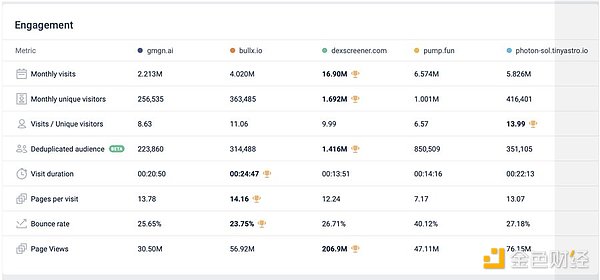Text: Cumberland Labs, Translated by: Jinse Finance xiaozou
After a few weeks of hanging out on Discords, lurking in Telegram groups, browsing Twitter, and contacting several research analysts and traders in the space, I had a comprehensive understanding of everyone’s opinions on meme coins (from seasoned algorithmic traders to my wife’s brother). I asked about how to improve the UI/UX for limit orders and complex order execution, asked friends if they thought Moo Deng was really good, or if they had heard of Peanut the Squirrel.
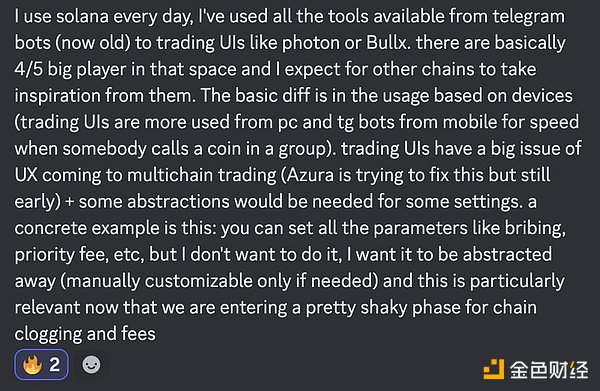
What you are about to read is a distillation of field research, a summary of existing public data on this vertical, and anonymous feedback on this narrative. We at Cumberland Labs believe this narrative is compelling and will continue for years. What may seem like an uncomplicated and oversimplified narrative on the surface actually represents a shift in user behavior that will bring billions of dollars of marginalized on-chain capital, whether those trading these tokens realize it or not.

1. What is Meme Coin?
The story of meme coins is one of constant evolution. From DOGE’s initial emergence as a Bitcoin imitator that attracted the attention of Elon Musk, to SHIB and PEPE capturing retail possibilities, to today’s fair launch phenomenon based on Solana – we see this market constantly reinventing itself.

Today, Solana dominates the space, powering 89% of new token issuance. Just last week, 181,000 new tokens were launched on DEXs (decentralized exchanges). This isn’t just a capacity issue, it’s also an accessibility issue. Platforms like pump.fun allow anyone to launch a token, but the success rate tells us something important: less than 2% of tokens make it to Raydium, and only 0.0045% of tokens sustain a market cap above $1 million.
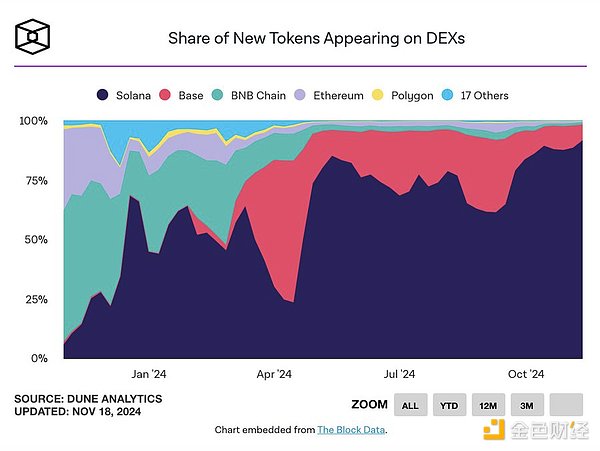
But what is the difference between a memecoin and a “shitcoin”? The difference lies in the key features that drive success:
The most successful tokens — whether DOGE or Moo Deng — share common elements: strong meme potential, attention catalysts, and community engagement. DOGE tapped into Elon Musk’s attention and first-mover status. Moo Deng captured people’s imagination with a viral social media presence. But most importantly, they built communities, turning casual onlookers into passionate supporters.
2. Numbers Don’t Lie
The recent growth of meme coins is far from a flash in the pan. Binance Research noted that since 2022, the percentage of meme coin market capitalization as a percentage of non-BTC/ETH/stablecoins has soared from 4% to 11% in just two years, nearly tripling its market share in such a competitive space.

Millennials and Gen Z now make up 94% of digital asset buyers. This isn’t just a demographic coincidence — it’s an entire generation reacting to the environment they find themselves in. They’re not just buying tokens; they’re rejecting the traditional paths to financial security that their parents followed. On the surface, meme coins may seem like a joke, but to these traders, they represent a real opportunity to earn returns outside of a system that has consistently failed them.

Andrew Edgecliffe-Johnson summed it up well: "It's hard to blame people for wanting to get rich quickly if they've lost faith in their ability to get rich slowly." The belief in getting rich slowly has been eroding over the years. In 1963, it took 4.4 times the average annual salary to buy a house, now it takes 8.1 times. Add to that the surge in inflation in recent years, which hit 7% in 2021, and it's clear that younger generations are looking for other financial opportunities.
This trend is more than just a gamble to make a quick buck (although there is certainly an element of that). This is about using their money to protest a system they have lost confidence in. The meme coin phenomenon is high risk, high reward, and happens to resonate strongly with today's traders. This is more than just a game, it's a vote of no confidence in the way wealth was built in the past.
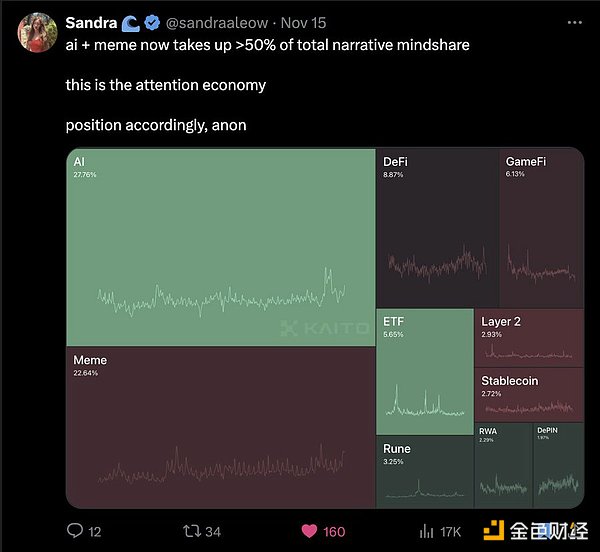
3. Analysis of the Meme Coin Phenomenon
The meme coin market is growing at an incredible pace. Our research shows that BOME reached a market cap of $1 billion in 2 days, PNUT in 14 days, WIF in 104 days, SHIB in 279 days, and DOGE in 8 years. Attracting and retaining traders' attention is critical.
Screenshots of the Phantom wallet on X show returns of 633% and over 10,520%, respectively, highlighting a broader trend: accessibility and fairness have become core. During the ICO boom of 2017, a key feature was universal participation - no private placements, no venture capital allocations, no complicated vesting timelines.

Today’s memecoin traders are resisting what one Discord user called the “VC exit liquidity simulator” of modern token offerings. A new memecoin without team allocations and market pricing brings back the level playing field of the early crypto era, where community and network effects were key.

The meme coin craze makes more sense when seen as an opportunity to participate in a level playing field without having to worry about VC vesting and token unlocking. People are tired of the traditional model, and fair launch platforms like pum.fun make it easy for anyone to issue tokens, allowing everyone to participate.
4. Reach 100x escape velocity
What separates a successful token launch from the thousands of failed launches? The numbers tell us clearly that less than 2% of tokens launched by pump.fun make it to Raydium, and only 0.0045% of tokens maintain a market cap above $1 million. But some tokens do achieve what we call “escape velocity” and escape the black hole of obscurity.
The pattern that success stories follow is clear, with the strongest tokens excelling in at least one of seven key areas: meme potential, attention catalyst, innovation, humor, community, distribution, and growth. Observe any successful meme coin and you’ll see that these elements are important, with attention catalyst, meme potential, community, and distribution being the most critical.

In the case of Moo Deng, success was no accident. The project attracted attention through social media such as Twitter, Telegram and TikTok. Its cute and highly memorable features constantly surfaced in the information flow, creating a viral recognition and sharing cycle. Although it is not particularly humorous, its strong attention catalyst and distribution strategy created growth momentum.

Solana’s role in this revolution cannot be overstated. The network now supports 89% of new token issuance and processes approximately 41 million non-voting transactions. This dominance is no accident — Solana’s low fees and fast transaction times create an environment that makes rapid experimentation possible, even though most experiments fail.
5. Current situation of data analysis
The data provides valuable insights into how traders interact with different memecoin platforms and highlights key gaps in the market.
First, it’s worth noting that around 60% of users still visit DexScreener after using their preferred trading terminal. They are using DexScreener’s insights, advanced filters, and analytical tools, which suggests that existing platforms are not fully meeting their needs. However, only 10-12% of DexScreener users end up using trading and execution terminals, even though these terminals offer improvements in customizability and parameter settings over DexScreener’s interface. This shows a gap in user satisfaction - trading terminals may have better features, but they are still underutilized.

When we compare usage on mobile and desktop, Photon stands out. Of the three main trading terminals, gmgn.ai, BullX, and Photon-Photon have the most mobile users, while BullX has the most desktop users. Despite BullX’s large desktop user base, a large portion of its traffic comes from links on Telegram. This shows that even with the mobile-first platform Telegram used for distribution, users end up interacting with BullX on their desktop. This also indicates to some extent the complexity of these terminals and the fact that users prefer to operate in an environment where they can manage all functions more comfortably.

This trend points to a broader problem: the plight of existing trading terminals. Their desktop dominance suggests that they are too cumbersome for mobile devices, leaving a huge gap in the market for trading terminals that work seamlessly across devices. Traders want powerful tools that can be accessed on their phones, with the flexibility to switch to a clean interface when needed. The market needs an all-in-one solution - an intuitive platform that combines advanced functionality with ease of use, whether the user is on a desktop or mobile device.
The fragmentation of the current experience is inherently inefficient and inconvenient. Traders must switch between multiple platforms to get the insights they need to effectively execute trades. Providing a unified solution that is deep and easy to use, while also being accessible on mobile devices through an adaptive UI, will significantly improve the trading experience.

6. In-depth trader perspective
Conversations with traders revealed a consistent demand - they want uncomplicated support. One trader explained: “I still need to set priority fees and bribes when network load is high. I want smart defaults that work well but allow me to adjust when needed.”
This balance between simplicity and control comes up over and over again. Current platforms either simplify everything or throw all the complexity at the user. There's no middle ground where something works out of the box but provides depth when needed.
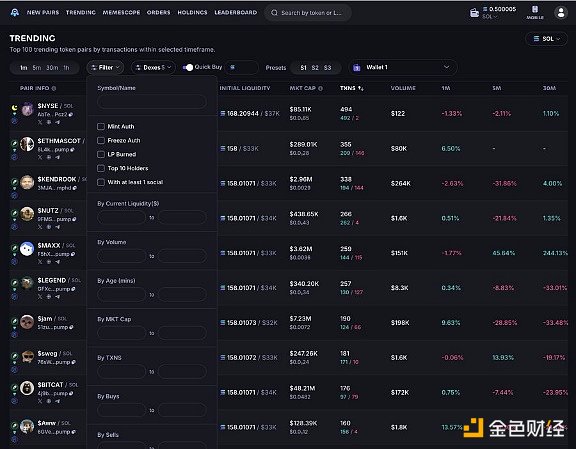
“It would be nice to have a UI for swaps, charts, and a list of recent trades in a single interface. Fewer clicks, and all the important information in one place,” one high-volume trader told me. Another described spending hours teaching his team basic concepts like gas optimization — time that could have been spent on actual trading.

One recurring complaint was about limit orders. “I got filled but lost all my positive slippage to the platform,” one trader noted. Others pointed out that limit orders on one platform seemed to be filled earlier than others, creating an uneven playing field that no one understood.
7. Market structure: the real problem
Current platforms are built for crypto natives and on-chain traders, who already understand terms like “slippage tolerance,” “priority fees,” and “bribes.” But most traders just want to know how much they paid and whether their trades will go through. One trader who manages more than 100 wallets told me that he couldn’t even keep track of his positions.

The mobile experience is even worse. While Telegram bots fill some gaps, they are not a real solution. They are a band-aid for a system that needs to be rethought from scratch.
This fragmentation problem creates real costs. Traders switch back and forth between different interfaces, miss opportunities due to failed trades, and lose money due to poor execution. The current ecosystem forces users to choose between expensive tools and poor performance - there is no middle ground.
8. Building solutions: Beyond the Band-Aid
The current memecoin trading landscape feels like a makeshift patchwork that’s just enough to keep people happy, but it could certainly be improved. When a trader tells us “it would be nice if someone could create a tool that lets you customize LP strategies,” or complains that they “have to set priority fees and bribes when fees are high,” or “wish there was better execution on SL and TP order strategies,” they’re pointing to a fundamental problem: existing solutions aren’t really solutions at all.

Most platforms feel like they’re built for people who are already familiar with on-chain transactions, bridging, and DeFi — all of which imply a certain amount of complexity. But after speaking with several different traders, I’ve found that traders seem to want the option to get complex features without the complex interface. The existing “advanced” UIs still don’t provide the parameterized features that advanced traders need, and the default UIs are too simple and abstract away features that can have a huge impact on returns. For example, as one trader put it, even a feature that “automatically tells me how much I’m going to spend on this trade (gas + transaction fees) to ensure that the trade goes through” would allow advanced users to say “hmm, that seems high, I might not want to pay that” while also giving regular users some description of how much they’re going to pay.

The solution isn’t just to simplify the interface, it’s to rethink how traders interact with these markets. When someone compares memecoin trading to a “game,” they’re not oversimplifying anything. What they really want is what a gamified experience brings. They want analytics that show win rates, meaningful performance tracking, and tools that help them understand trading patterns.

9. The Road Ahead: Cumberland Labs ’ Vision
We are not here to create another trading terminal or launch another Telegram bot. We see a much bigger opportunity: to create an interface that bridges the gap between the simplicity of Moonshot and the power of advanced trading terminals. A platform that evolves with its users, providing an accessible entry point while offering the depth and sophistication that experienced traders need. More retail traders means more volume, greater liquidity, and better opportunities - both for sophisticated on-chain traders and newbies just discovering the space.
This means:
Abstract complexity without sacrificing functionality—intelligent defaults and full customization where needed.
Unified trading experience that combines charting, execution and analytics into a single window.
Truly effective cross-chain portfolio management.
Real-time performance tracking helps traders understand their strategies.
Avoid obvious risks, but don't limit opportunities.
Current platforms have laid a solid foundation for today’s crypto-native on-chain traders. But the next retail trader will need something different — a platform that starts simple and grows with them. They need intuitive interfaces that allow them to learn and progress as they trade, with more complex features gradually introduced when they are ready. Existing “advanced vs. default” UI setups could improve their functionality to better suit both goals. This doesn’t mean dumbing things down, but creating multiple levels of complexity that users can explore at their own pace.
The memecoin market is growing faster than ever before. While 75% of memecoins have been created in the past year, we saw an opportunity to create a tool that welcomes newcomers while providing support for experienced traders.

10. Beyond the transaction: Building community
Trading is just one piece of the puzzle. Community, education, and shared experiences together drive the memecoin ecosystem. While there has been some form of integration through existing platforms like Discord and Telegram, being able to bring the community to the platform for execution is something new. One of the reasons that existing mobile activity in the Telegram bot exceeds the trading UI is the ability to copy a contract address from a TG group into the bot faster than buying on the trading UI.
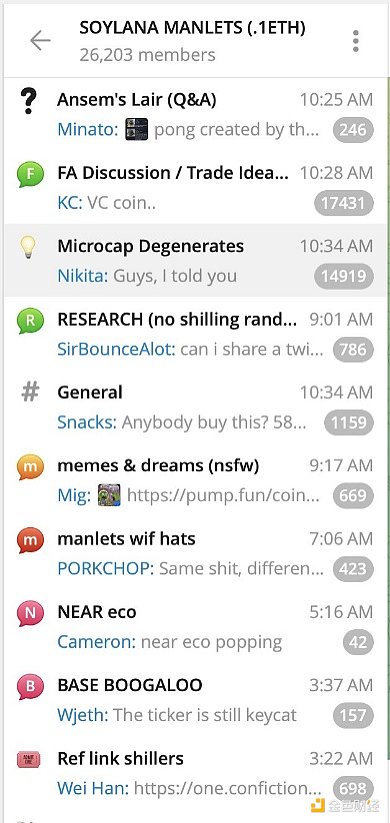
We envision a more integrated approach. Imagine tracking your progress alongside other traders, sharing strategies when you
We envision a more integrated approach. Imagine tracking your progress with other traders, sharing strategies when you want, and building a reputation based on actual performance. Not just arbitrary metrics, but real insight into what’s working and what’s not.
Socializing like this isn’t about creating another crypto echo chamber. It’s about providing context and insights to help traders make better decisions. Whether it’s observing how different entry points affect returns, understanding performance patterns before and after migrations, or learning successful strategies, every attribute is relevant to improving trading results.
